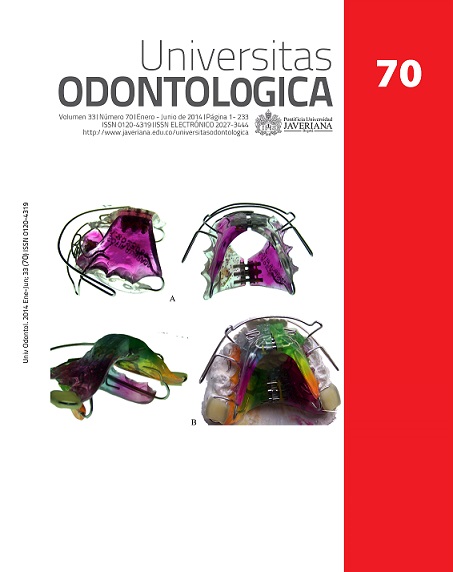Abstract
Background: Challenges met to implement early orthodontics in community health services contrast with public policies that promote preventive and interceptive child care. Purpose: Introduce a proposal for clinical intervention on children based on an eight-year pilot experience using early orthodontic therapies at the Universidad de la Frontera with patients of fourth and fifth year dental students and clinics in the southern Chilean region. Methods: The proposal analyzes the bases of an adequate diagnosis and subsequent treatment of craneofacial abnormalities frequent among children, as well as the development of the appliances. Results: The proposal includes, first, addressing bad habits among class II patients; second, maxillary protraction for Class III patients; and tooth eruption control in Class I patients. Conclusions: Patients who use their devices with discipline get adequate three-dimensional results. Relationship with the parents and children motivation are key factors in deciding whether to treat a child with coaches, protraction face mask, or dynamic space maintainers. Even though this does not preclude all patients from needing corrective orthodontic treatments, tissue conditions improve for future interventions. Incorporating prefabricated appliances may provide increased coverage, as long as dentists who treat children understand their scope and limitations.
KEYWORDS
early treatment; habits; maxillary protraction; tooth eruption; dentofacial anomalies; deciduous dentition
This journal is registered under a Creative Commons Attribution 4.0 International Public License. Thus, this work may be reproduced, distributed, and publicly shared in digital format, as long as the names of the authors and Pontificia Universidad Javeriana are acknowledged. Others are allowed to quote, adapt, transform, auto-archive, republish, and create based on this material, for any purpose (even commercial ones), provided the authorship is duly acknowledged, a link to the original work is provided, and it is specified if changes have been made. Pontificia Universidad Javeriana does not hold the rights of published works and the authors are solely responsible for the contents of their works; they keep the moral, intellectual, privacy, and publicity rights.
Approving the intervention of the work (review, copy-editing, translation, layout) and the following outreach, are granted through an use license and not through an assignment of rights. This means the journal and Pontificia Universidad Javeriana cannot be held responsible for any ethical malpractice by the authors. As a consequence of the protection granted by the use license, the journal is not required to publish recantations or modify information already published, unless the errata stems from the editorial management process. Publishing contents in this journal does not generate royalties for contributors.


